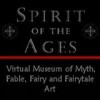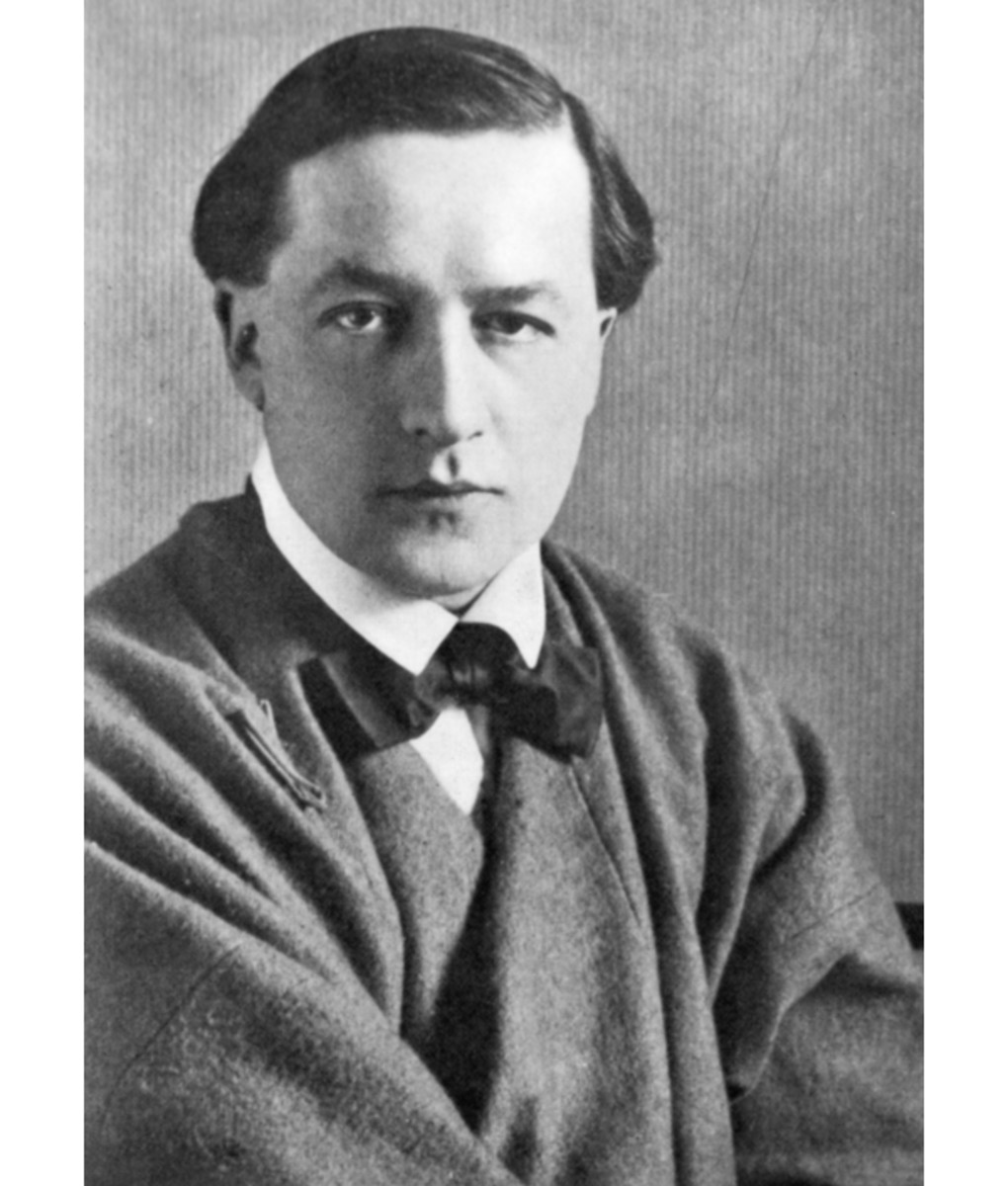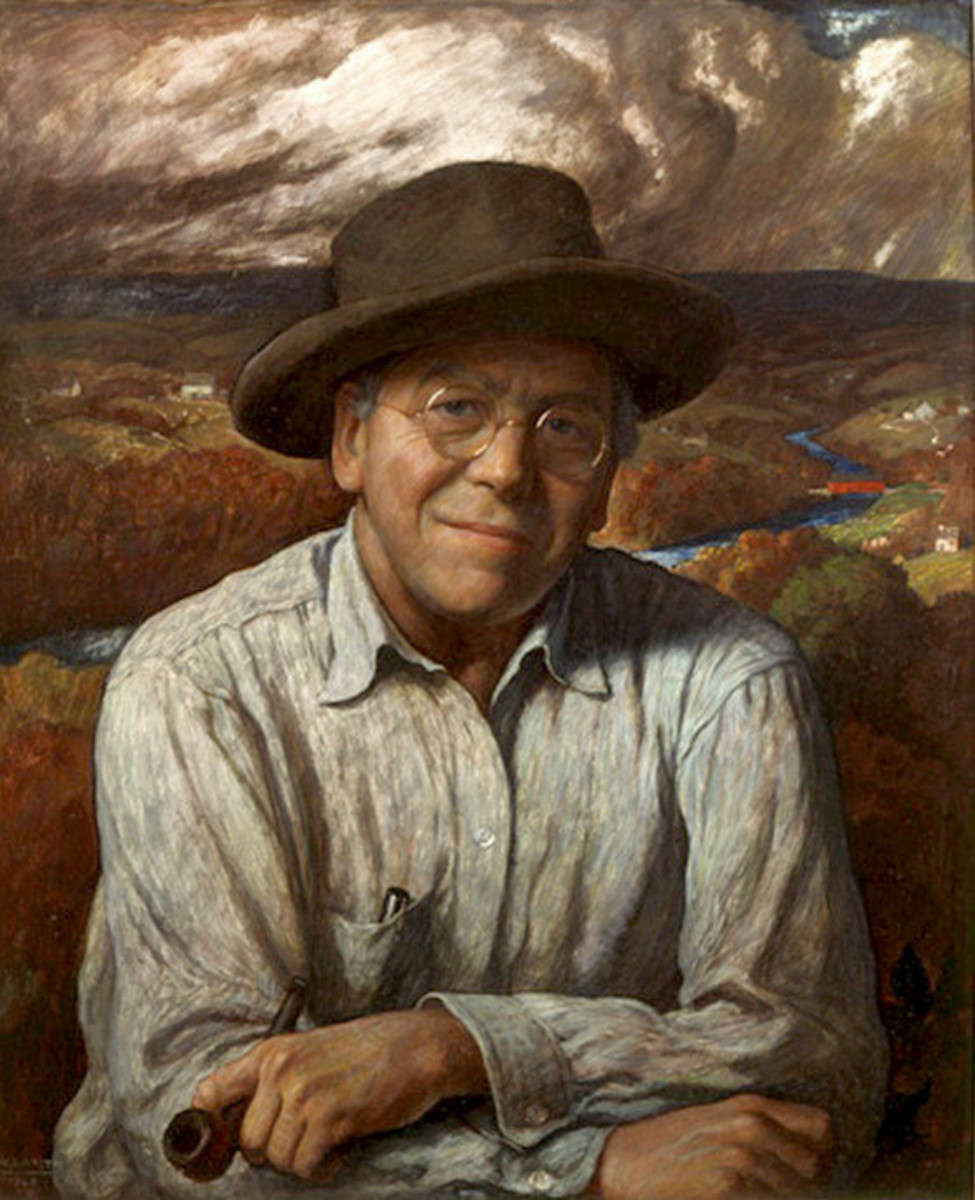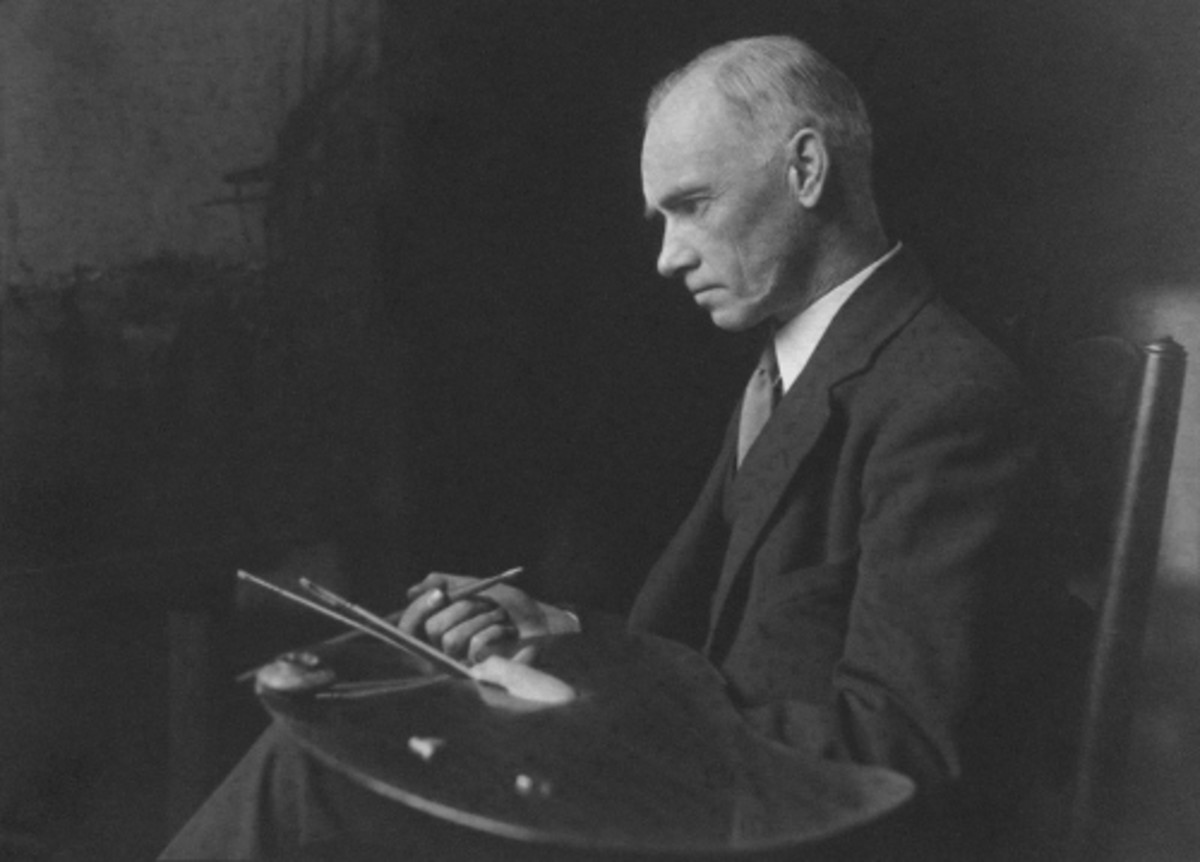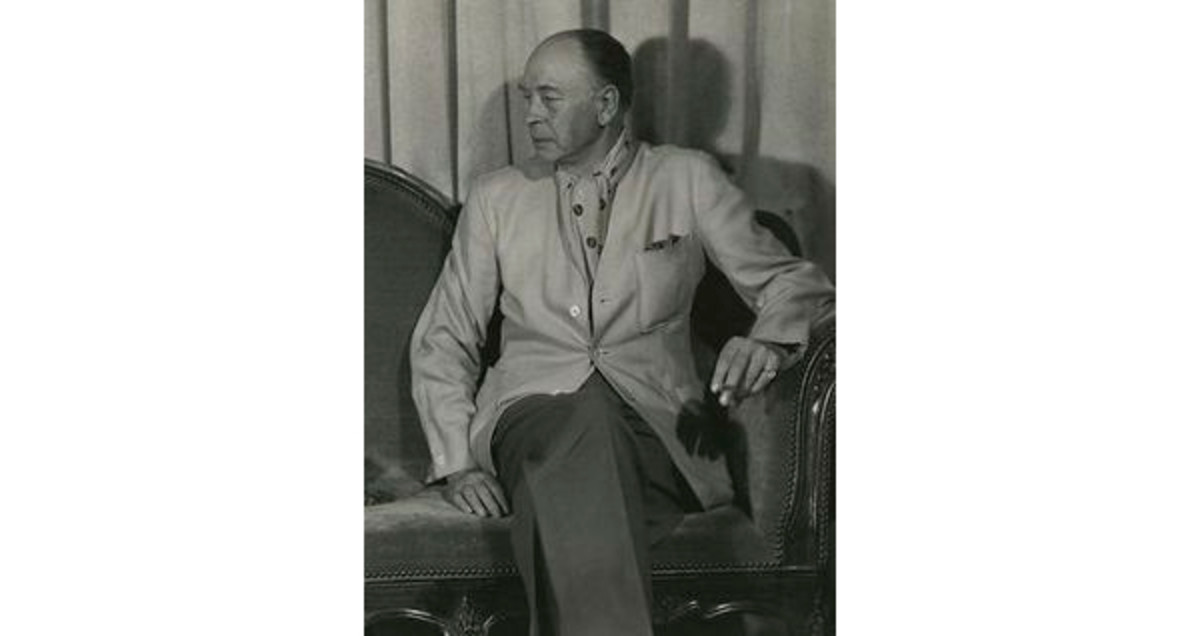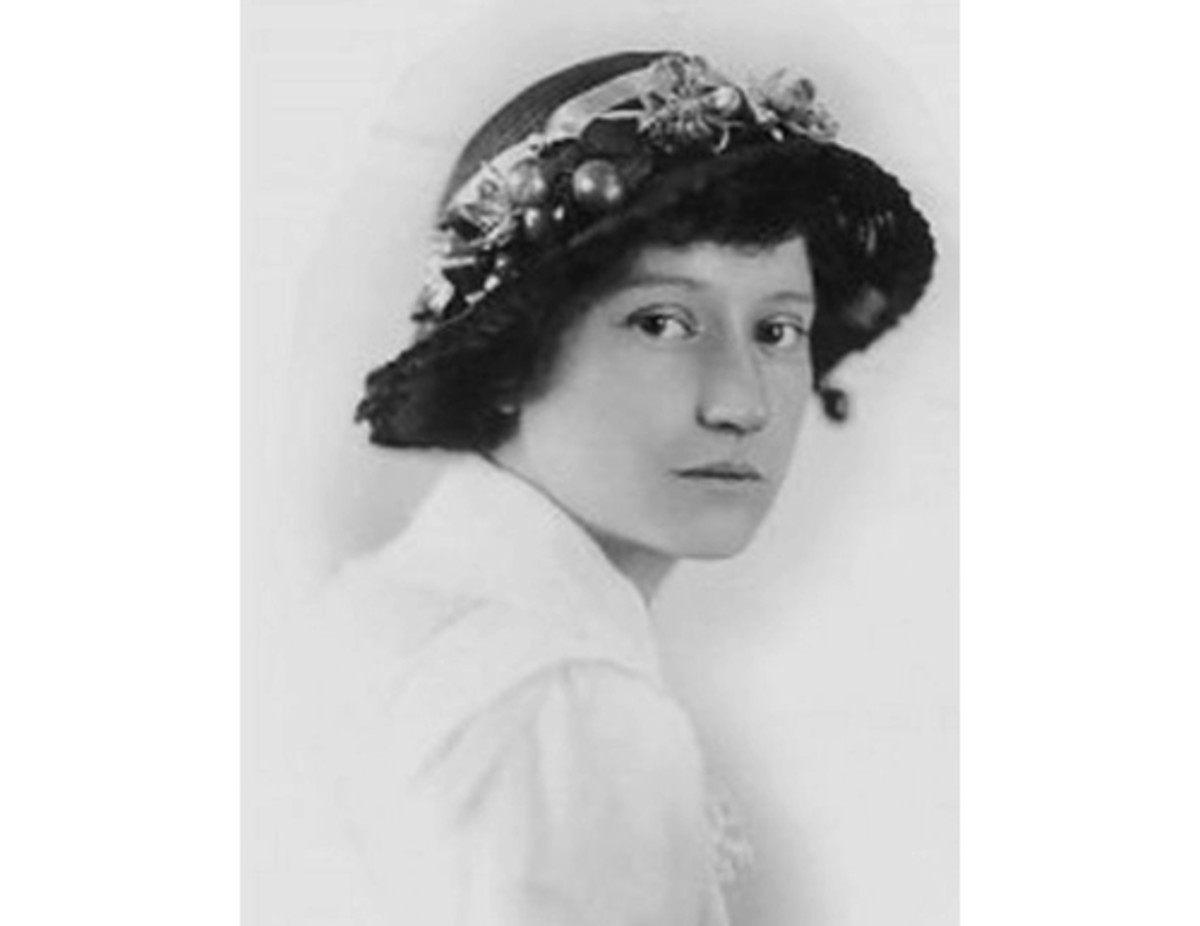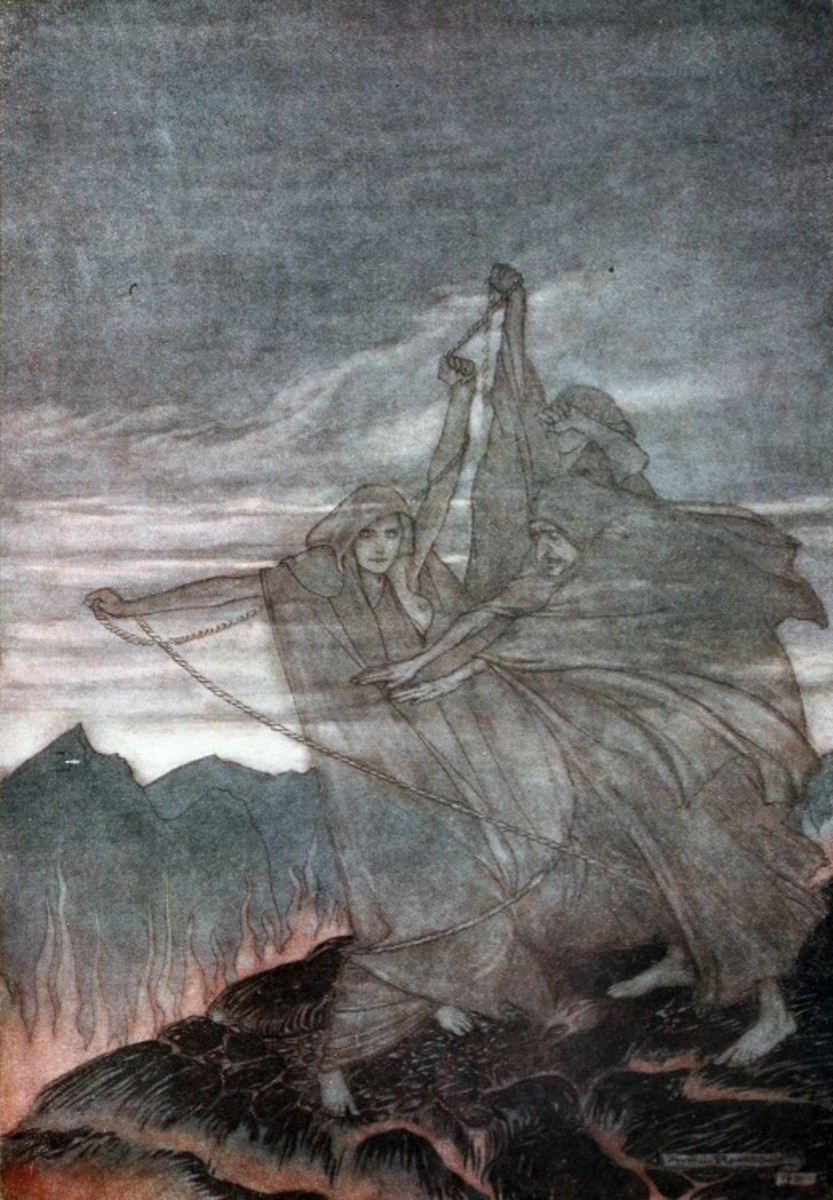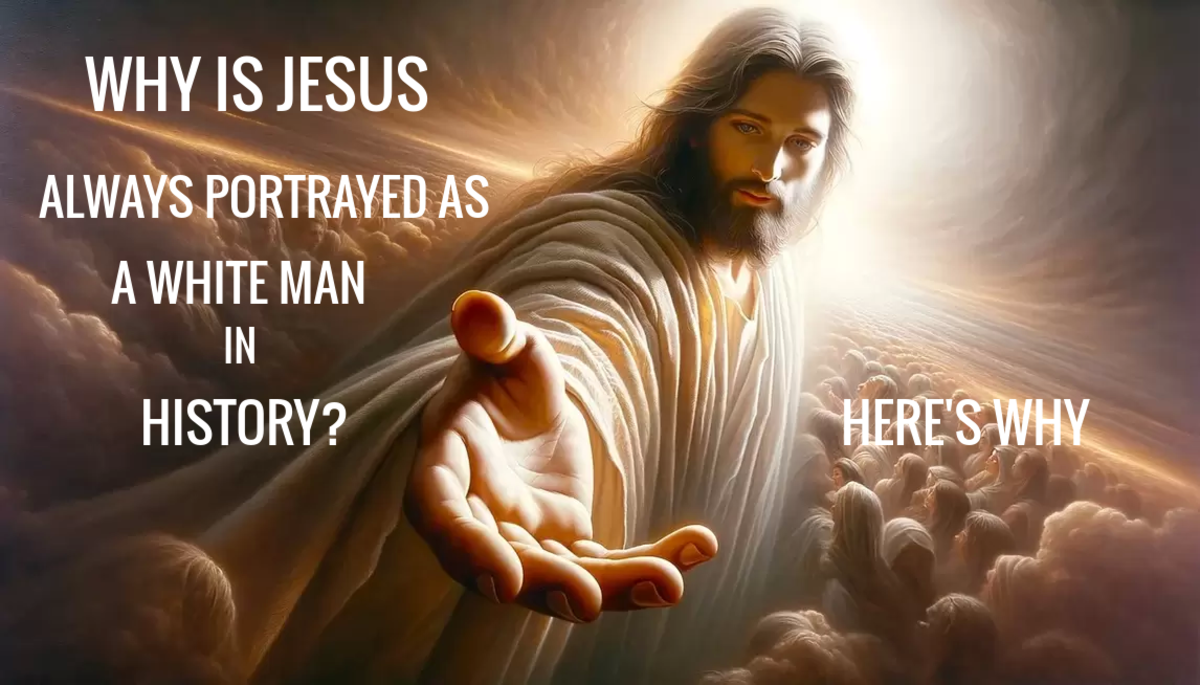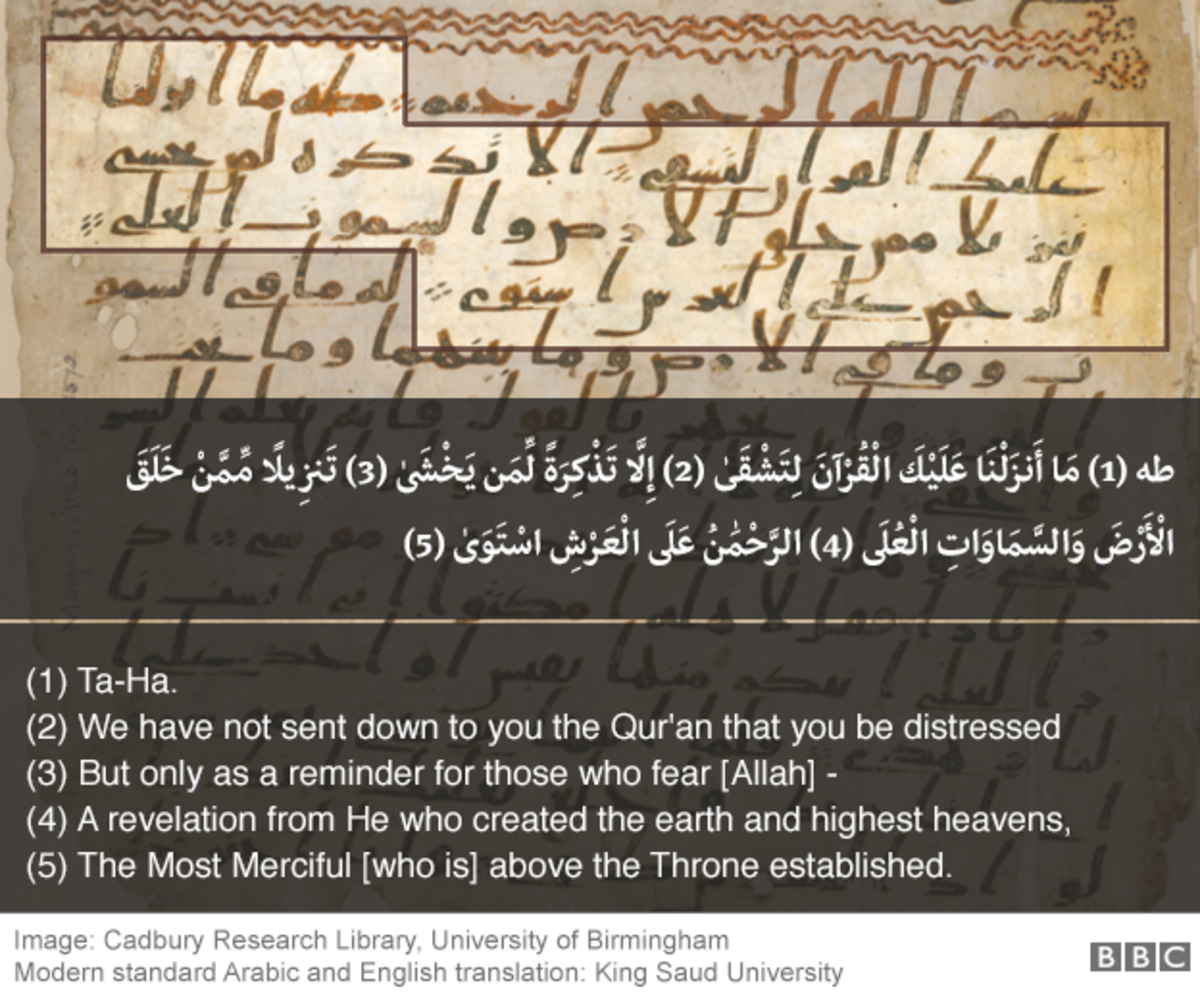Inspiring Spiritual Messages and Illustrations from the Ages: Be Inspired and Learn about the Authors and Artists
Through all time, space and thought, we are experiencing communication with the Divine. On occasions, the messages are consistent with our expectations of such inspired dialogue - and on other occasions, we have difficulty with reconciling our perceptions of 'reality' with oneness with our Spiritual selves. This, it seems, is part and parcel of the 'human' condition, but we are infinitely resourceful Beings and moving in Grace with the Divine is a matter of remembering our true selves.
We have brought together this Hub, having been moved by the Divine, to bravely embrace our true selves - and the opportunity for communication provided by Hubpages - to facilitate communication on this topic.
This Hub interposes inspiring Spiritual messages with illustrations an is divided into the following sub-sections:
- "The sole obstruction to our true Selves is forgetfulness";
- "There is no separation from our Spiritual selves";
- "Every moment of every day is a manifestation of our Spiritual selves";
- "You Love and are Loved"; and
- "Be at One with your True Self - and remember you are a Spiritual Being".
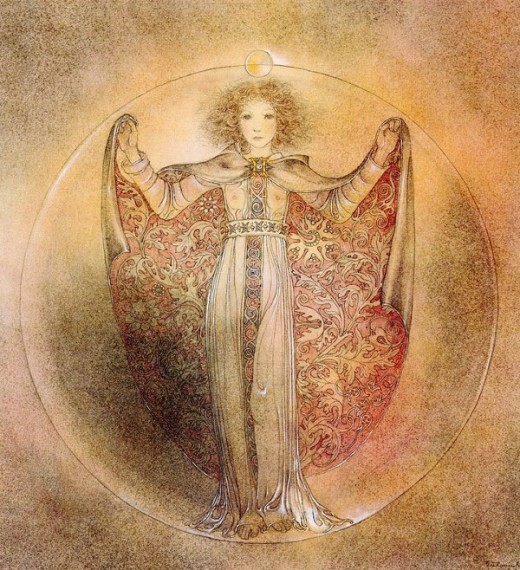
Who was Sulamith Wulfing?
Sulamith Wülfing (1901-1989) was a German artist and illustrator associated with "The Golden Age of Illustration".
With a familial background that included Theosophist parents, Wülfing's interest in illustrating fairytales and mystical events may be understood. However, given that she, herself, experienced visitations from angels, fairies, gnomes and nature spirits throughout her life, Wülfing's art provides an insight into her own otherworldly visions.
"Der Unsterbliche Seele" ("The Immortal Soul") - shown to the right - is a truly inspired illustration from Sulamith Wülfing published in the First Edition of Der Kleine Seejungfrau (1953) (a German adaptation of Hans Christian Andersen's classic tale, "The Little Mermaid").
Reflecting for a moment on that image, consider all that was necessary for you to see it in this lens ... computers, electricity, Sulamith Wülfing, Hans Christian Andersen, your parents (the list is infinite, insofar as the whole of existence has led you to this moment). It is an example of metaphorically "seeing the universe in a coffee table".
We hope you will enjoy this exploration of inspiring Spiritual messages - irrespective of who, when or where they originate, or in what form they are presented (our metaphorical 'coffee tables') - and reflect on our oneness with the Divine in the process.
Along the way, we do hope that you will share your own thoughts with us about how the Spirit moves you.
The sole obstruction to our true Selves is forgetfulness
Democritus (ca. 460 BC - ca. 370BC)
"Good means not merely not to do wrong, but rather not to desire to do wrong"
"Happiness resides not in possessions, and not in gold, happiness dwells in the soul"
"It is greed to do all the talking but not to want to listen at all"
Democritus was a Thracian Philosopher who, in addition to being influential on pre-Socratic thought, also contributed to constructing an atomic theory for the cosmos in concert with his mentor, Leucippus (although that theory was based on different principles from those established by modern Physicists).
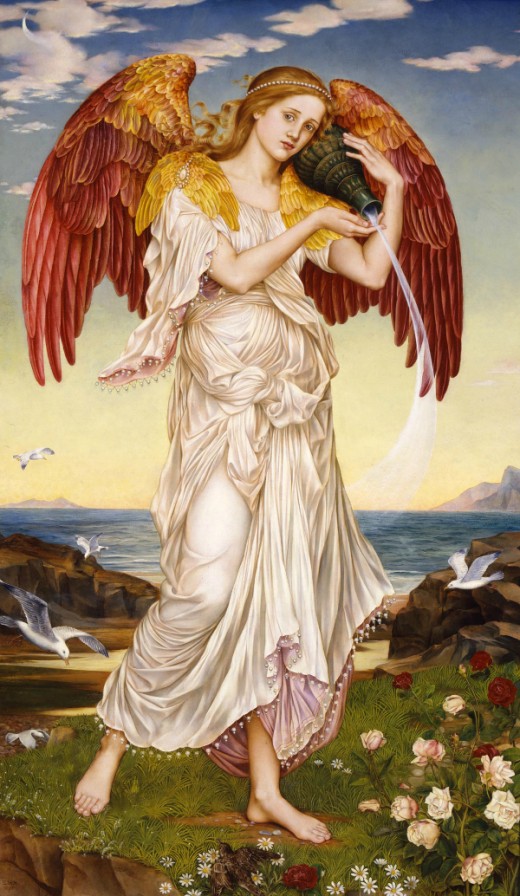
"Eos" by Evelyn de Morgan
"Eos" by Evelyn de Morgan depicts the Titan goddess from Greek mythology who rose from her home at the edge of Oceanus to herald her brother, Helios, the Sun god.
Evelyn de Morgan (1855-1919) was spiritually inspired and her style was influenced by the Pre-Raphaelites and it is renowned for its allegorical and symbolic tone.
Her initial formal art training was undertaken at the Slade School of Art, with an appreciation - and influence from - Renaissance Masters being fostered during the many opportunities she had to visit Florence.
The range of themes interpreted by Evelyn de Morgan through her paintings is significant and the powerful spiritual tone impossible to resist. Through her use of an extraordinary variety of colors, movement and attention to detail, she has few equals.
Hannah More (1745-1833)
"Forgiveness is the economy of the heart ... forgiveness saves the expense of anger, the cost of hatred, the waste of spirits"
"Love never reasons, but profusely gives; it gives like a thoughtless prodigal its all, and then trembles least it has done to little"
"Genius without religion is only a lamp on the outer gate of a palace; it may serve to cast a gleam of light on those that are without, while the inhabitant sits in darkness"
More was an English Author and Philanthropist who developed a reputation as an evangelical moralist and has been noted for her practical philanthropy (such activity being responsible for establishing 12 schools by 1800).
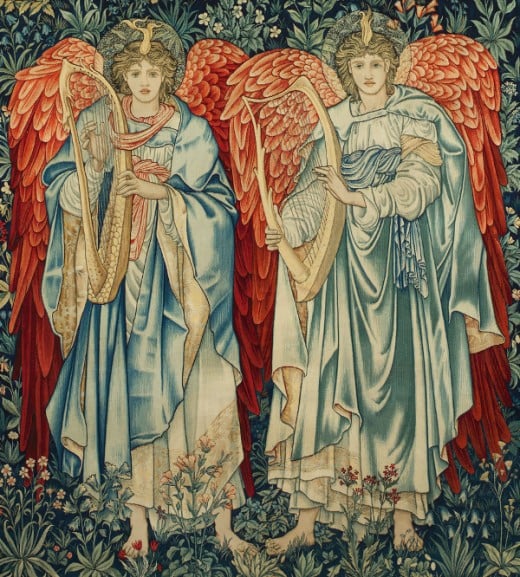
"Angeli Laudantes" by Edward Burne-Jones
"Angeli Laudantes" - shown on the right - is a colored design for a tapestry (known as a 'cartoon') based on these Angelic figures first conceived by Edward Burne-Jones in 1878 for a stained-glass window for Salisbury Cathedral. In 1894, this 'cartoon' was prepared by John Henry Dearle pursuant to the original designs by Burne-Jones.
Sir Edward Coley Burne-Jones (1833-1898) was an artist associated with the Pre-Raphaelite Brotherhood.
While attending Exeter College in Oxford, he became a friend of William Morris - with whom he later contributed to a number of magnificent works. He studied under Rossetti before traveling to Italy and drawing further influences from a range of artists, including Ruskin, with whom he traveled.
Burne-Jones was largely responsible for bringing the Pre-Raphaelites into the mainstream of the British art world and in doing so, he executed some of the most exquisite and beautiful artworks of his time. It is not without reason that Aymer Vallance referred to Burne-Jones as "the greatest painter the world has known since the fifteenth century".
There is no separation from our Spiritual selves
Søren Kierkegaard (1813-1855)
"A man who is a physical being is always turned toward the outside, thinking that his happiness lies outside him, finally turns inward and discovers that the source is within him"
"Life is not a problem to be solved, but a reality to be experienced"
"Life can only be understood backwards; but it must be lived forwards"
Kierkegaard was a Danish Philosopher, Theologian and Author whose philosophical works are considered to be precursors to Existentialism. He maintained that, despite our responses to life's events - it is up to each of us to create the meaning of our life and to live our lives passionately and sincerely. His approach is known to have been influenced by Socrates (469-399 BC) - famous for identifying Socratic Paradoxes, including: (i) no one desires evil; (ii) no one errs or does wrong willingly or knowingly; (iii) virtue - all virtue - is knowledge; and (iv) virtue is sufficient for happiness.
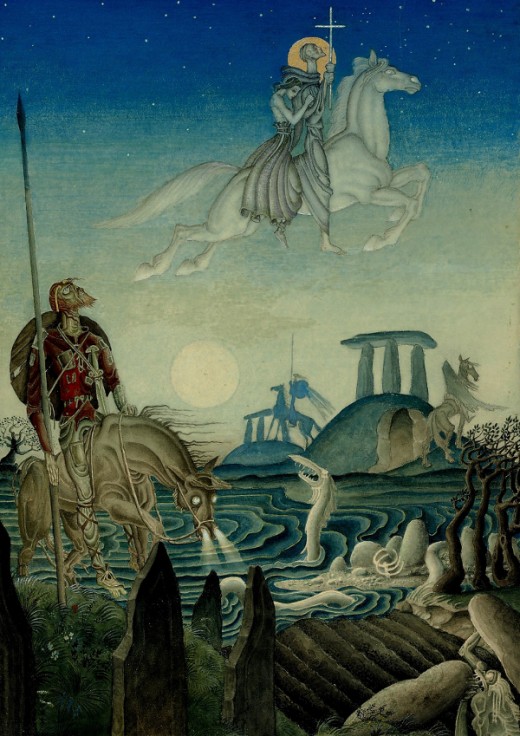
"The Marsh King's Daughter" by Kay Nielsen
This glorious illustration from Kay Nielsen - shown on the right - was inspired by "The Marsh King's Daughter", a classic tale by Hans Christian Andersen.
As is typical in Nielsen's work, he has combined a number of elements of the tale to craft an image of incredible power, with such elements including: burial mounds; Vikings risen from the dead; dragons and goblins; and the risen Christian priest and the Marsh King's Daughter.
Kay Nielsen (1886-1957) is considered by many to be among the leading artists associated with "The Golden Age of Illustration". He was a Danish artist who emigrated to the United Kingdom for a period before returning to his homeland during World War I. Later, he emigrated to the United States.
His career and artistic output was diverse as he completed major suites of book illustrations through the first three decades of the 20th Century, he designed for the Danish theater, worked for Disney on a number of projects and completed major mural installations throughout California.
Solomon Ibn Gabirol (1021-1058)
"The first step in the acquisition of wisdom is silence, the second listening, the third memory, the fourth practice, the fifth teaching others"
"The test of good manners is to be patient with the bad ones"
"As long as a word remains unspoken, you are its master; once you utter it, you are its slave"
Gabirol was an Adalucian Poet and Philosopher whose works are thought to have been influenced by Neoplatonism - a philosophical approach with the goal of achieving unity, or oneness with fundamental reality. Through his work, "Fons Vitae", he is credited with being among the first scholars to introduce Neoplatonism to Europe, holding that: (i) all created beings are constituted of form and matter; (ii) the first principle holds for both the physical world and that spiritual world (including Godhead); and (iii) matter and form are always and everywhere in the relation of substratum, property or attribute. In "The Improvement of the Moral Qualities", Gabirol suggests that cultivation of one's Soul is achieved through: (i) examination of one's peculiarities and inclinations; (ii) habituation of one's behaviour to abandonment of mean-spiritedness; and (iii) alignment with the spiritual and the abiding.
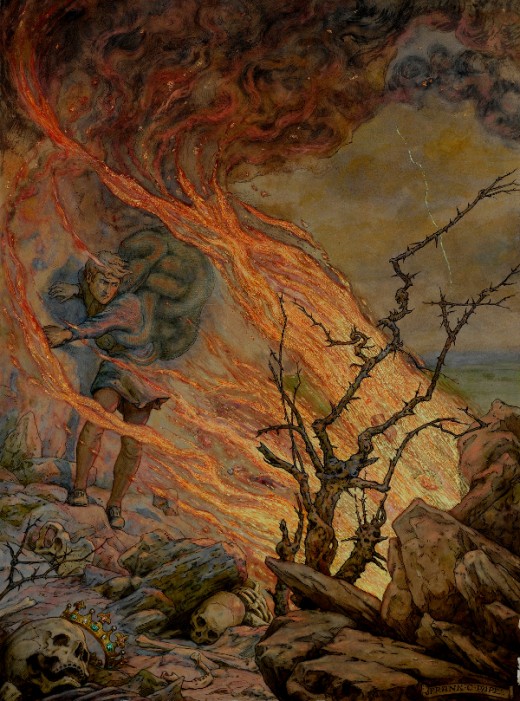
"Christian on his way to Legality's house" by Frank C Papé
This extraordinarily powerful illustration from Papé - shown on the right - was the basis of one of the color plates appearing in the 1910 Edition of Paul Bunyan's classic, The Pilgrim's Progress.
"The Pilgrim's Progress" is a Christian allegory written by John Bunyan (it was first published in 1678). The tale's central protagonist is, fittingly, named Christian, and Bunyan takes the reader on Christian's journey from his home, styled the "City of Destruction" (representing earthly existence) to the "Celestial City" (representing Heaven) atop Mt Zion.
Frank C Papé (1878-1972) was an English artist associated with "The Golden Age of Illustration". He contributed color and monotone illustrations interpreting fairy tales, myths and legend to many titles in his early career - at that time, his artwork carried many Art Nouveau and Pre-Raphaelite influences.
Every moment of every day is a manifestation of our Spiritual selves
Peter Abelard (1079-1142)
"The key to wisdom is this - constant and frequent questioning, for by doubting we are led to question and by questioning we arrive at the truth"
"I preferred the weapons of dialectic to all the other teachings of philosophy, and armed with these, I chose the conflicts of disputation rather than the trophies of war"
"Those who abandon themselves to the passions of this miserable life, are compared in Scripture to beasts"
Petrus Abaelardus (also known as Pierre Abélard [in French] and Peter Abelard [in English]) was a Medieval French Philosopher, Theologian and Logician who is known both for his intellect and his tragic relationship with Héloïse d'Argenteuil (Author, Scholar and Abbess) that resulted in Abelard's castration on the orders of Canon Fulbert (Héloïse's uncle).
Through Abelard's Philosophical works, he was a significant factor in the fall of 'Realism' and the rise of approaches based on the work of Aristotle who believed that virtue was a prerequisite for optimum realization of the Soul's purpose in human existence - which itself resulted in well-being.
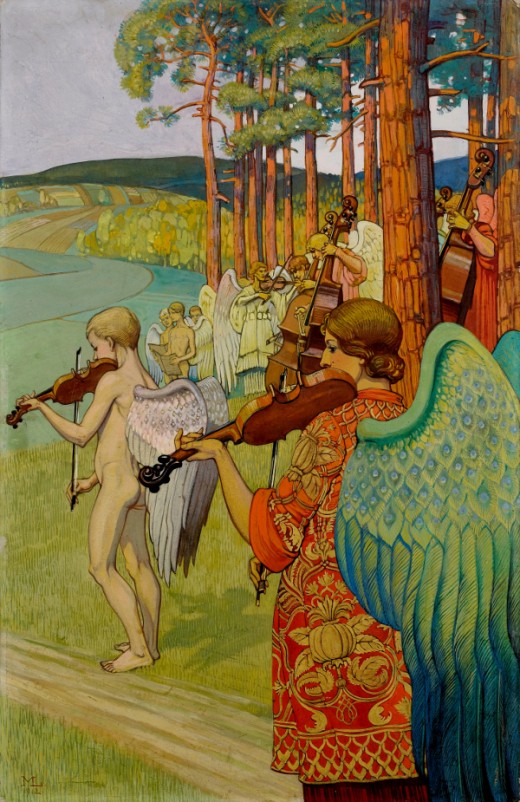
"Rast auf der flucht nach Aegypten" by Maximilien Liebenwein
This illustration - known as "Rest on the Flight into Egypt" - is inspired by an episode from Jesus' childhood told in "Gospel of Pseudo-Matthew".
Maximilian Liebenwein (1869-1926) was an Viennese artist known for his painting and illustrations. His works were influenced by Impressionist and Art Nouveau styles.
Liebenwein was a leading member of the Viennese Secession - being its Vice-President and exhibiting with the group on numerous occasions.
He was most productive in the first decades of the 20th Century and had success in having a number of illustrations published in magazines and books.
Johann Wolfgang von Goethe (1749-1832)
"All intelligent thoughts have already been thought; what is necessary is only to try to think of them again"
"Many people take no care of their money till they come nearly to the end of it, and others do just the same with their time"
"I can tell you, honest friend, what to believe: believe life; it teaches better that book or orator"
Goethe was a German Author, Artists, Biologist, Physicist and Polymath who is recognized as a leading figure in modern German literature the the Weimar Classicism movement (a cultural and literary movement in which intellectuals sought to establish a new Humanism through the synthesis of Romantic, Classical and Enlightenment ideals). He is be known for "Faust" - the longest poem in modern European literature - in which Mephistopheles corrupts God's favorite human (Faust), but Divine intervention miraculously saves both Faust and his lover, Gretchen.
His non-fiction philosophic and aphoristic books are known to have been influences for many philosophers, including: Hegel; Schopenhauer; Nietzsche; Cassirer; Jung; and Wittgenstein.
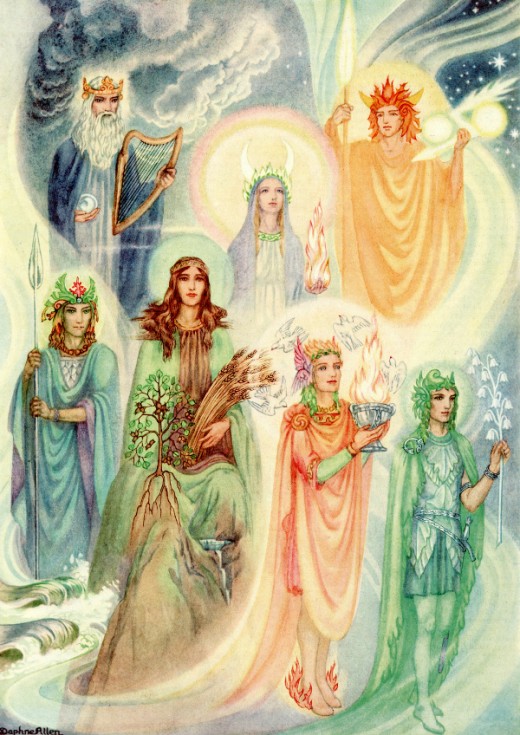
"Worshipped by our Remote Ancestors at the Winter Solstice" by Daphne Allen
This glorious illustration from Daphne Allen - shown on the right - depicts the Gaelic Dagda (the Father of the Gods and the Lord of Fire and Thunder), Brighide (Goddess of the Moon, Spring and Poetry), the Gaelic Lugh or Nuada (God of Light, Sun and Sky - he was also called Lord of Science), Mannanan (God of the Sea), Dana (the Earth Mother), Aengus or Angus Og (the God of Love) and Mider (the Nature God).
Daphne Allen (1899-1985) is one of the artists associated with "The Golden Age of Illustration". As a child, suites of Allen's illustrations were published in two illustrated books, A Child's Visions (1912) and The Birth of the Opal (1913). At the age of 17, a third book including her illustrations was published, The Cradle of Our Lord (1916) and in her adult life, a further very rare book including her illustrations was published, The Silver Birch Tree (1928).
You Love and are Loved
Anne Frank (1929-1945)
"We all live with the objective of being happy; our lives are all different and yet the same"
"Think of all the beauty still left around you and be happy"
"How wonderful it is that nobody need wait a single moment before starting to improve the world"
Annelies Marie Frank (1929-1945) - known as Anne Frank - was a Jewish victim of the Nazi Holocaust renowned for her diary which was published posthumously. Between the ages of 13 and 15, Anne Frank wrote in her diary of the her experiences in Nazi-occupied Amsterdam - her final entry being three days before her family's hiding place was discovered and she and her family were taken into custody. After being deported from the Netherlands, Anne Frank died in Auschwitz concentration camp.
The impact of her diary has been immense as noted by Roger Rosenblatt (writing of Frank in Time magazine's "Time 100: The Most Important People of the Century") thus:
"The passions the book ignites suggest that everyone owns Anne Frank, that she has risen above the Holocaust, Judaism, girlhood and even goodness and become a totemic figure of the modern world - the moral individual mind beset by the machinery of destruction, insisting on the right to live and question and hope for the future of human beings ... [t]he reason for her immortality was basically literary. She was an extraordinarily good writer, for any age, and the quality of her work seemed a direct result of a ruthlessly honest disposition".
It is a truly fitting outcome for the girl who wrote the following passage in her diary in war-torn Amsterdam:
"I want to be useful or bring enjoyment to all people, even those I've never met. I want to go on living even after my death! And that's why I'm so grateful to God for having given me this gift, which I can use to develop myself and to express all that's inside me!
When I write I can shake off all my cares. My sorrow disappears, my spirits are revived! But, and that's a big question, will I ever be able to write something great, will I ever become a journalist or a writer?"
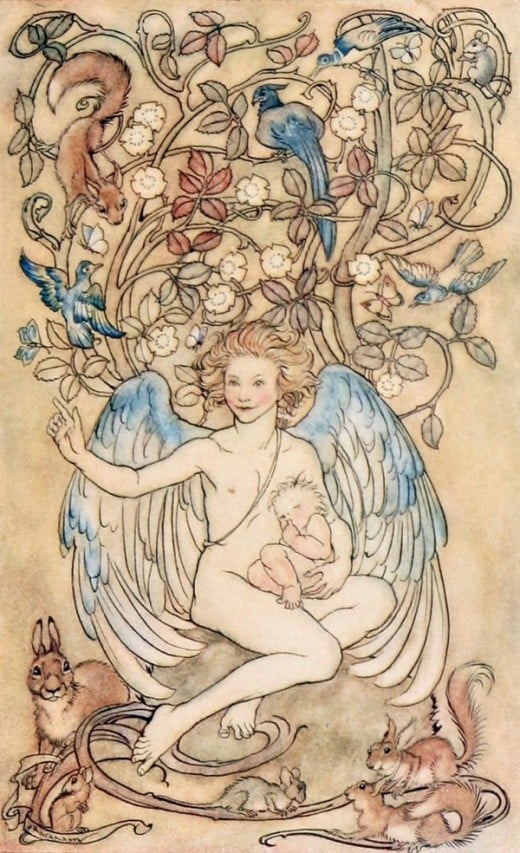
"Hush! for the holiest thing that lives is here" by Arthur Rackham
This illustration by Arthur Rackham - shown on the right - was among a suite published by William Heinemann (London) in the 1918 First Edition of The Springtide of Life.
The Springtide of Life (1918) was a collection of works by Algernon Swinburne compiled by Edmund Gosse drawn from four volumes of poetry: the second series of "Poems and Ballads"; "Tristram of Lyonesse and Other Poems"; "A Century of Roundels"; and "Poems and Ballads".
Arthur Rackham (1867-1939) is one of the great artists associated with "The Golden Age of Illustration". Rackham's capacity to artistically interpret and represent the lore of fairy tales, myths, fables and legend was prodigious.
Carl Gustav Jung (1875-1961)
"Where love rules, there is no will to power, and where power predominates, love is lacking. The one is the shadow of the other"
"One looks back with appreciation to the brilliant teachers, but with gratitude to those who touched our human feelings. The curriculum is so much necessary raw material, but warmth is the vital element for the growing plant and for the soul of the child"
"Your vision will become clear only when you can look into your own heart. Who looks outside, dreams; who looks inside, awakes"
Carl Jung (1875-1961) was a Swiss Psychiatrist who is recognized as the Founder of Analytical Psychology - an approach with the goal of integrating the unconscious forces and motivations driving behavior with the conscious mind, essentially leading an individual along the path of self-realization - an effective spiritual reconection with one's True Self.
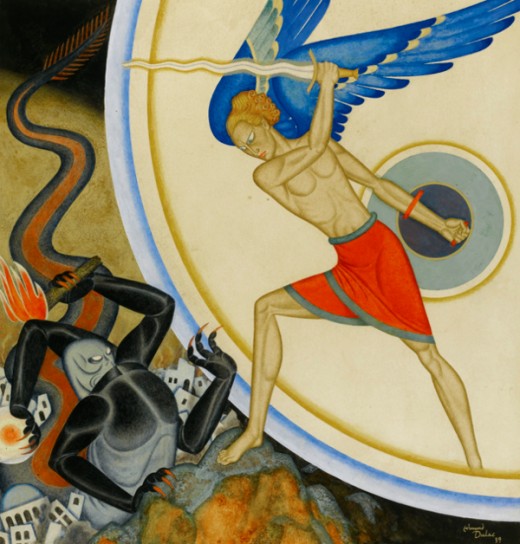
"It is the Evil Things We Should be Fighting Against" by Edmund Dulac
This illustration by Dulac - shown on the right - was his contribution to The Queen's Book of the Red Cross(1939) - a fund raising publication produced by Hodder & Stoughton (London). Proceeds from the sale of the book were provided in aid of the Red Cross and the Order of St John of Jerusalem. It depicts the Nazi menace in frightening inhuman form, seemingly Hell-bent on destruction, being met by the glowing sword, shield and energy of an equally fearsome Angelic Being focused on vanquishing the threat.
Edmund Dulac(1882-1953) is one of the great artists associated with "The Golden Age of Illustration". Dulac displayed an artistic interest from an early age, with his favorite medium - watercolors - being established in his teenage years.
Be at One with your True Self - and remember you are a Spiritual Being
Marcus Aurelius Antoninus (121-180)
"The happiness of your life depends on the quality of your thoughts, therefore guard accordingly; and take you entertain no notions unsuitable to virtue, and reasonable nature"
"When you arise in the morning, think of what a precious privilege it is to be alive - to breathe, to think, to enjoy, to love"
"Everything we hear is an opinion, not a fact. Everything we see is a perspective, not the truth"
Marcus Aurelius was Roman Emperor between 161 and 180AD - being co-Emperor with Lucius Verus between 161 and 169. Marcus Aurelius and Lucius Verus were proclaimed co-Emperors in an orderly transition following the death of Antoninus Pius.
Marcus Aurelius was from an aristocratic family and received academic training from an early age - one of his tutors being the leading Homeric scholar of the time, Alexander of Cotiaeum. In addition to his studies, Marcus Aurelius also participated in civic duties appropriate to a Roman aristocrat and fate steered him swiftly to a path that would see him destined for Imperial office from a relatively young age - after his adoption by the future Emperor Antoninus Pius. Despite that life path, Marcus Antoninus pursued training in Stoic Philosophy and his "Meditations" (a book of Stoic Philosophy written on military expeditions) is regarded as a seminal literary achievement. Herodian, a Roman Historian, described the reign of Marcus Antoninus thus:
"Alone of the emperors, he gave proof of his learning not by mere words or knowledge of philosophical doctrines but by his blameless character and temperate way of life."
In introducing his translation of "Meditations", George Long writes of the enduring legacy of Marcus Aurelius thus:
"The little book of Antoninus has been the companion of some great men. Machiavelli's 'Art of War' and Marcus Antoninus were the two books which were used when he was a young man by Captain John Smith, and he could not have found two writers better fitted to form the character of a soldier and a man. Smith is almost unknown and forgotten in England, his native country, but not in America, where he saved the young colony of Virginia. He was great in his heroic mind and his deeds in arms, but greater still in the nobleness of his character. For a man's greatness lies not in wealth and station, as the vulgar believe, nor yet in his intellectual capacity, which is often associated with the meanest moral character, the most abject servility to those in high places and arrogance to the poor and lowly; but a man's true greatness lies in the consciousness of an honest purpose in life, founded on a just estimate of himself and everything else, on frequent self-examination, and a steady obedience to the rule which he knows to be right, without troubling himself, as the emperor says he should not, about what others may think or say, or whether they do or do not do that which he thinks and says and does".
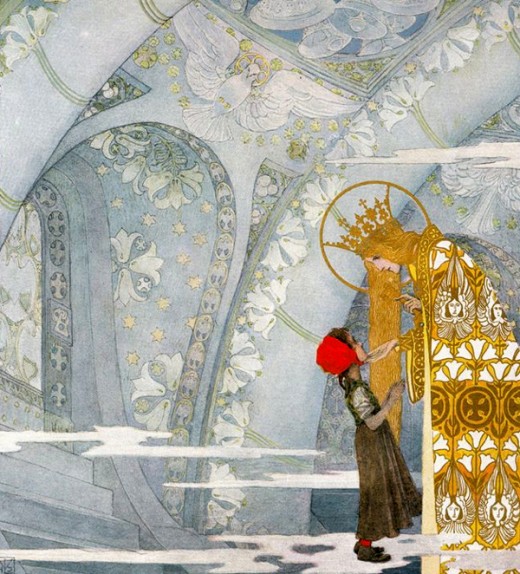
"Marienkind" by Heinrich Lefler and Joseph Urban
This illustration by Lefler (1863-1919) and Urban (1872-1933) - shown on the right - was from a suite of illustrations published in the 1905 First Edition of Grimm's Märchen ("Tales from the Brothers Grimm"). It depicts the Virgin Mary handing the Keys of Heaven to her ward.
Lefler and Urban were brothers-in-law who often worked in collaboration. The pair founded the Hagenbund - an exhibiting society similar to the Secessionists. Lefler was a painter and Urban was skilled as an architect, book illustrator, exhibit designer, interior decorator and set designer. Lefler and Urban collaborated on a number of illustrated books, in addition to designs for more than 20 theatrical productions. Soon after the publication of "Andersen Kalender" (and "Csoda Album" - including images from "Andersen Kalender" - in Hungary) in 1911, Urban emigrated to the United States where he established a reputation in set design for such productions as the Boston Opera Company, the Ziegfield Follies and the Metropolitan Opera. At one time, he was Art Director for William Randolph Hearst's Cosmopolitan Studios. He also created landmark architecture, including the Paramount Theatre Building, Mar-a-Lago in Palm Beach, Florida and the New School and Hearst Magazine Building in New York.
Desiderius Erasmus (1466-1536)
"It is the chiefest point of happiness that a man is willing to be what he is"
"Give light, and the darkness will disappear of itself"
"What difference is there, do you think, between those in Plato's cave who can only marvel at the shadows and images of various objects, provided they are content and don't know what they miss, and the philosopher who has emerged from the cave and sees the real things?"
Desiderius Erasmus Rotterdamus (1466-1536) was a Dutch Renaissance Humanist, Priest and Theologian whose works were important influences on the Reformation (although he, himself, remained committed to reforming the Catholic Church from within). Following his parents' deaths, Erasmus received his education in a number of monastic and semi-monastic institutions.
His best known work is "Moriae Encomium" - known as "The Praise of Folly" (English); or, "L'Eloge de la Folie" (French), written in the closing years of the first decade of the 16th Century. "Moriae Encomium" was a satirical critique of both the Catholic Church and popular superstitions and was dedicated to his friend, the English Renaissance Humanist, Sir Thomas More.
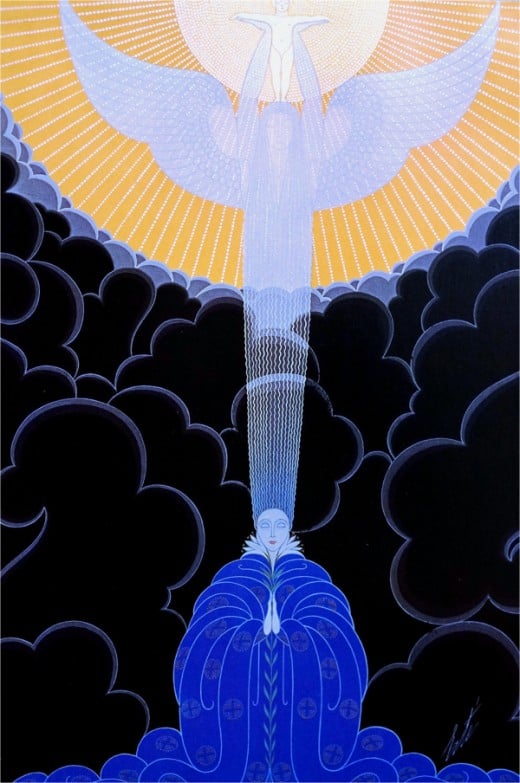
"The Annunciation" by Erté
This illustration by Erté - shown on the right - was published in the 1926 Edition of The Illustrated London News.
Erté (1892-1990) - born Roman Petrovich Tyrtov (in Russia) - moved to France early in his career and became closely associated with the Art Nouveau and Art Deco aesthete through his painting, couture and theatrical work.
After securing his first substantial contract with Harper's Bazaar in 1915, Erté's career gained considerable momentum and he became sought after as a designer, not only of general fashion and illustrations, but also of stage costumes and sets. Within France, his stage designs included those for Théâtre du Ba-ta-Clan and Folies Bergère, while in the United States, he prepared designs for George White's Scandals.
